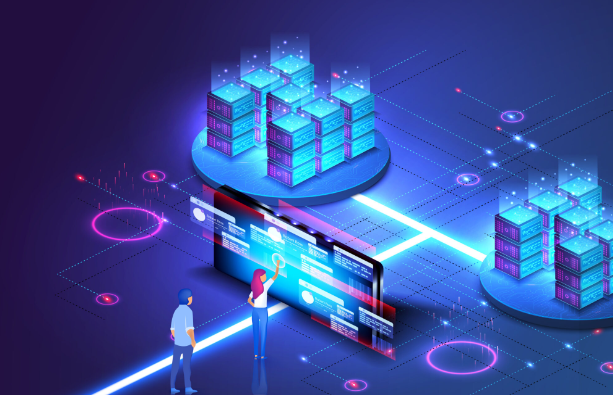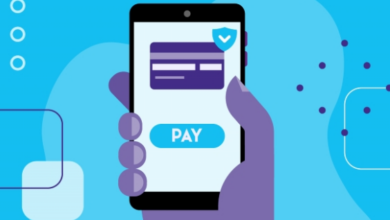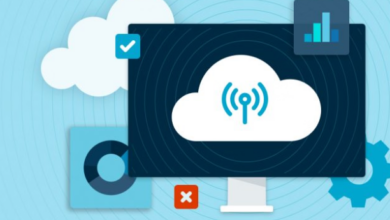Cloud Based RMM

Cloud Based RMM – Cloud RMM (Remote Monitoring and Management) is a cloud-based solution that enables remote, real-time monitoring and management of IT infrastructure. It provides a centralized platform for MSPs (Managed Service Providers) to manage and deliver IT services to their clients.
Cloud Based RMM: The Future of IT Management

The Cloud RMM (Remote Monitoring and Management) is a cloud-based software solution that enables MSPs (Managed Service Providers) to remotely monitor and manage their clients’ IT infrastructure. Cloud RMM tools provide a centralized platform for MSPs to manage all of their clients’ devices, including servers, workstations, laptops, and mobile devices.
Benefits of Cloud RMM
Cloud RMM (Remote Monitoring and Management) has become a game-changer for Managed Service Providers (MSPs). By leveraging the cloud, these tools offer a powerful and efficient way to remotely manage a client’s entire IT infrastructure.
Here’s a breakdown of the key benefits Cloud RMM brings to the table:
- Reduced Costs: Cloud RMM eliminates the need for expensive on-premise hardware and software. Subscription models typically offered by cloud solutions make it easier to manage finances. No more upfront capital expenditure for servers and IT staff dedicated to maintaining them.
- Increased Efficiency: Cloud RMM automates many tedious tasks like patch management, software deployment, and remote support. This frees up valuable time for MSP technicians to focus on more strategic work or tackle complex issues. Imagine resolving issues and deploying updates across all clients’ machines with a few clicks.
- Improved Scalability: Cloud RMM solutions are inherently scalable. As your MSP business grows and takes on more clients, the platform can easily adapt to accommodate the increasing workload. No need to worry about outgrowing your RMM system or straining your IT infrastructure.
- Enhanced Security: Cloud RMM offers features like anti-virus protection, firewall management, and intrusion detection, providing a robust security layer for your clients’ networks. Proactive monitoring helps identify and address potential threats before they become major problems.
- Accessibility and Flexibility: Cloud-based nature allows access from anywhere with an internet connection. This empowers technicians to work remotely, improving their work-life balance and allowing them to be more responsive to client needs.
Choosing the right Cloud RMM tool requires careful consideration of features, pricing, and support offered by different vendors. However, the benefits Cloud RMM offers are undeniable. By adopting this technology, MSPs can streamline operations, deliver better service to their clients, and ultimately achieve significant growth.
How to Choose a Cloud RMM Tool
The Managed Service Provider (MSP) landscape is brimming with Cloud RMM (Remote Monitoring and Management) options. With such a vast selection, choosing the ideal tool can feel overwhelming. But fret not! Here’s a roadmap to guide you through the selection process:
1. Identifying Your Needs:
- Features: Make a prioritized list of features crucial for your business. Consider functionalities like patch management, remote access, automation capabilities, mobile device management, and reporting tools.
- Client Base: Tailor your choice to your clientele. If you manage complex server environments, prioritize robust server monitoring features. For clients with a strong focus on security, a strong security suite within the RMM is essential.
- Budget: Cloud RMM pricing varies depending on features and the number of devices managed. Determine your budget beforehand to narrow down options.
2. Research and Shortlist:
- Market Leaders: Research established Cloud RMM providers like Datto RMM, Kaseya, NinjaOne, and Atera. Explore their offerings and see how they align with your needs.
- Industry Reviews: Read industry reviews and testimonials from other MSPs using Cloud RMM tools. This can provide valuable insights into real-world experiences and potential drawbacks.
- Vendor Demos: Schedule demos with shortlisted vendors. This allows you to experience the platform firsthand, ask questions, and gauge user-friendliness.
3. Key Considerations During Selection:
- Scalability: Ensure the Cloud RMM can scale seamlessly as your business grows. Consider the platform’s capacity to handle an expanding client base and device count.
- Security: Evaluate the vendor’s security practices. Look for features like multi-factor authentication, data encryption, and robust access controls to safeguard client data.
- Integrations: Does the Cloud RMM integrate with your existing tools like ticketing systems or professional service automation (PSA) platforms? Seamless integration streamlines workflows and improves overall efficiency.
- Support: Prioritize vendors with excellent customer support. Look for responsive technical assistance, readily available training resources, and a strong user community.
4. Free Trials and Pilot Programs:
Many Cloud RMM vendors offer free trials or pilot programs. Take advantage of these opportunities to experience the platform firsthand with your team and assess its suitability for your daily operations.
5. Making the Final Decision:
After careful evaluation, compare shortlisted vendors based on your needs, budget, and the trial experience. Don’t hesitate to revisit features and functionalities to ensure the chosen RMM aligns perfectly with your business goals.
By following these steps, you’ll be well-equipped to choose the Cloud RMM that empowers your MSP to deliver exceptional service, optimize workflows, and achieve long-term success.
The Future of Cloud RMM
Cloud RMM (Remote Monitoring and Management) has carved a niche as an essential tool for Managed Service Providers (MSPs). But what does the future hold for this ever-evolving technology? Here’s a glimpse into some exciting trends that will shape the landscape of Cloud RMM:
- AI and Machine Learning (ML) Integration: Expect AI and ML to play a more prominent role. Cloud RMM will leverage these technologies for predictive maintenance, anomaly detection, and automated remediation of potential issues. Imagine RMM systems automatically identifying and resolving problems before they disrupt client operations.
- Enhanced Security Features: With the ever-increasing cyberthreat landscape, Cloud RMM will prioritize advanced security features. We can expect integration with threat intelligence platforms, vulnerability scanning with automated patching, and enhanced endpoint protection capabilities.
- Focus on User Experience (UX): Cloud RMM interfaces will become even more user-friendly and intuitive. Expect improved dashboards with actionable insights, drag-and-drop automation builders, and mobile device accessibility for technicians to manage tasks on the go.
- Integration with IoT (Internet of Things): As the number of connected devices explodes, Cloud RMM will seamlessly integrate with IoT management tools. This will allow MSPs to manage a wider range of devices, from sensors and security cameras to industrial equipment, all under a single platform.
- Compliance Automation: Cloud RMM will offer features to automate compliance reporting, making it easier for MSPs to ensure their clients adhere to industry regulations and data privacy standards.
- Partnership and Ecosystem Building: Cloud RMM vendors will likely forge stronger partnerships with other IT service providers and software companies. This will create a robust ecosystem offering MSPs a wider range of integrated solutions to cater to diverse client needs.
Conclusion
Cloud RMM is a powerful tool that can help MSPs reduce costs, increase efficiency, improve scalability, and enhance security. MSPs who are looking for a way to improve their IT management should consider using a cloud RMM tool.




